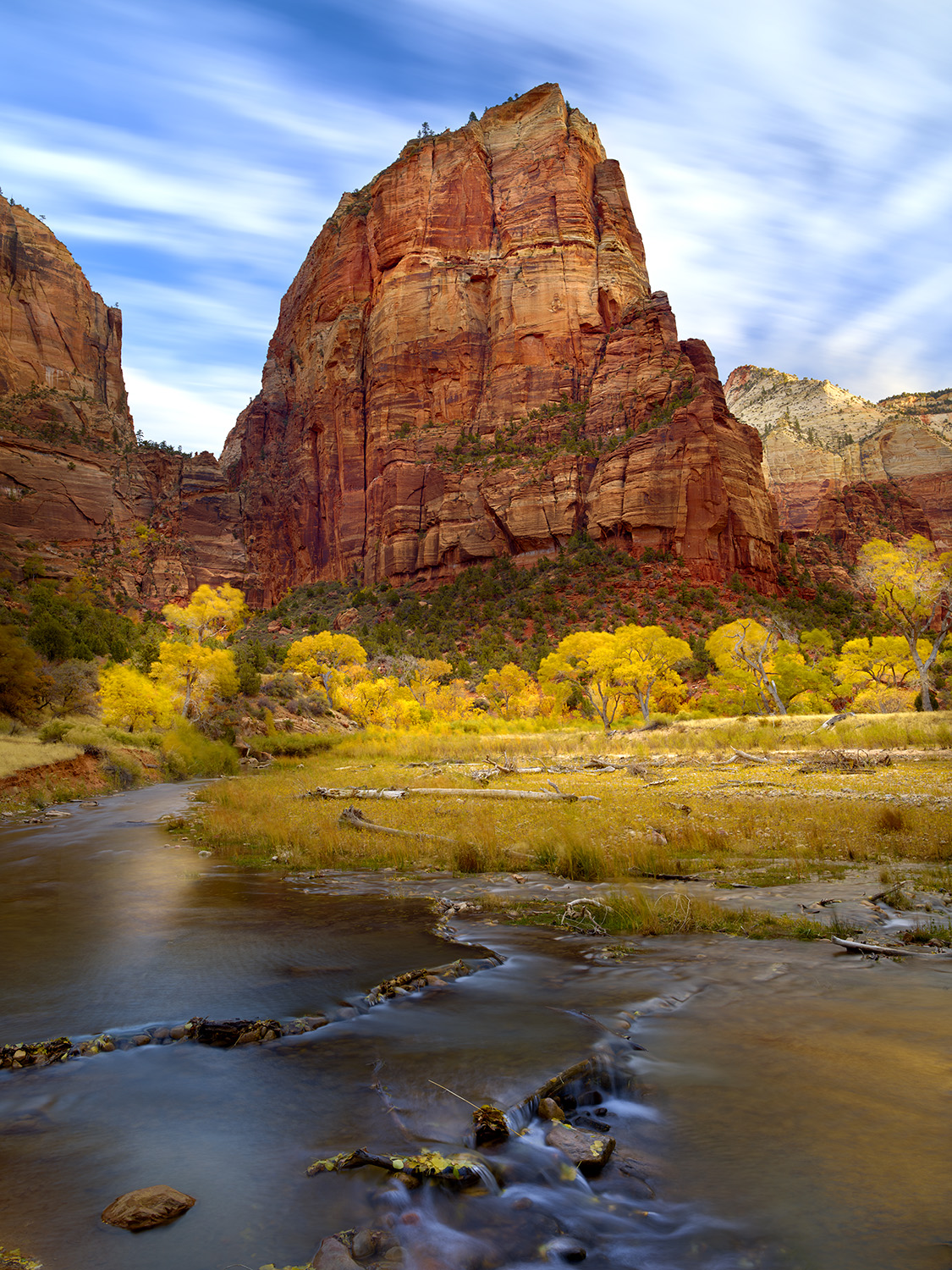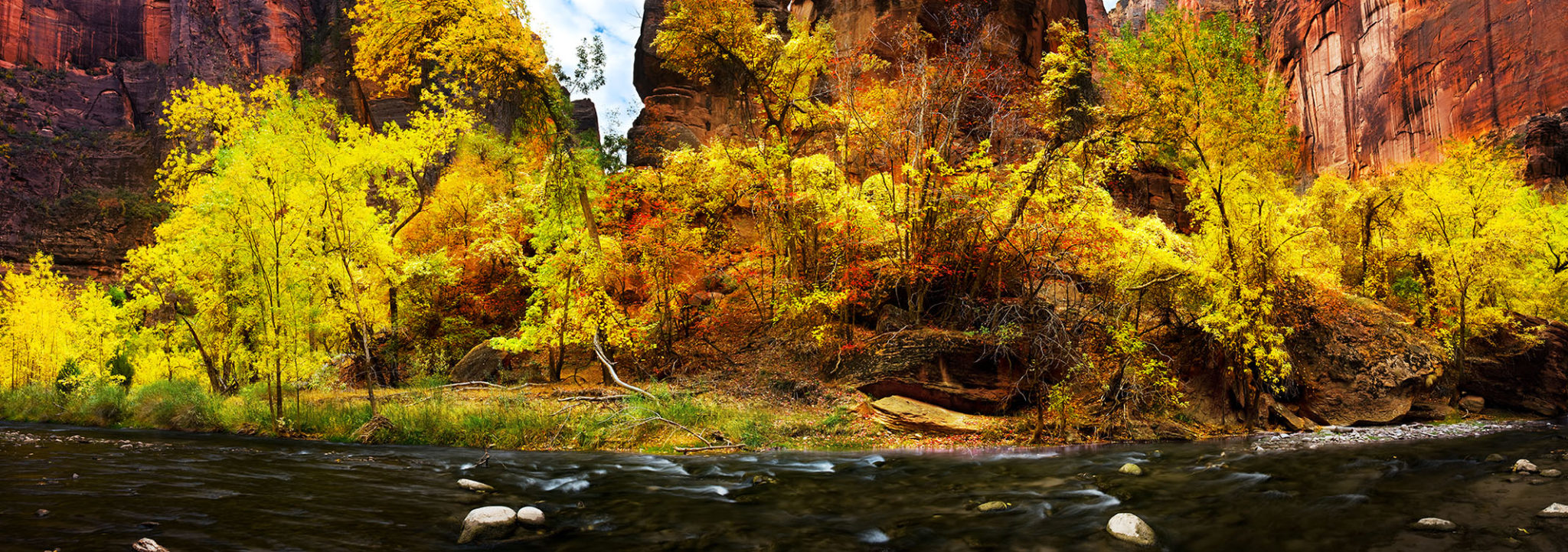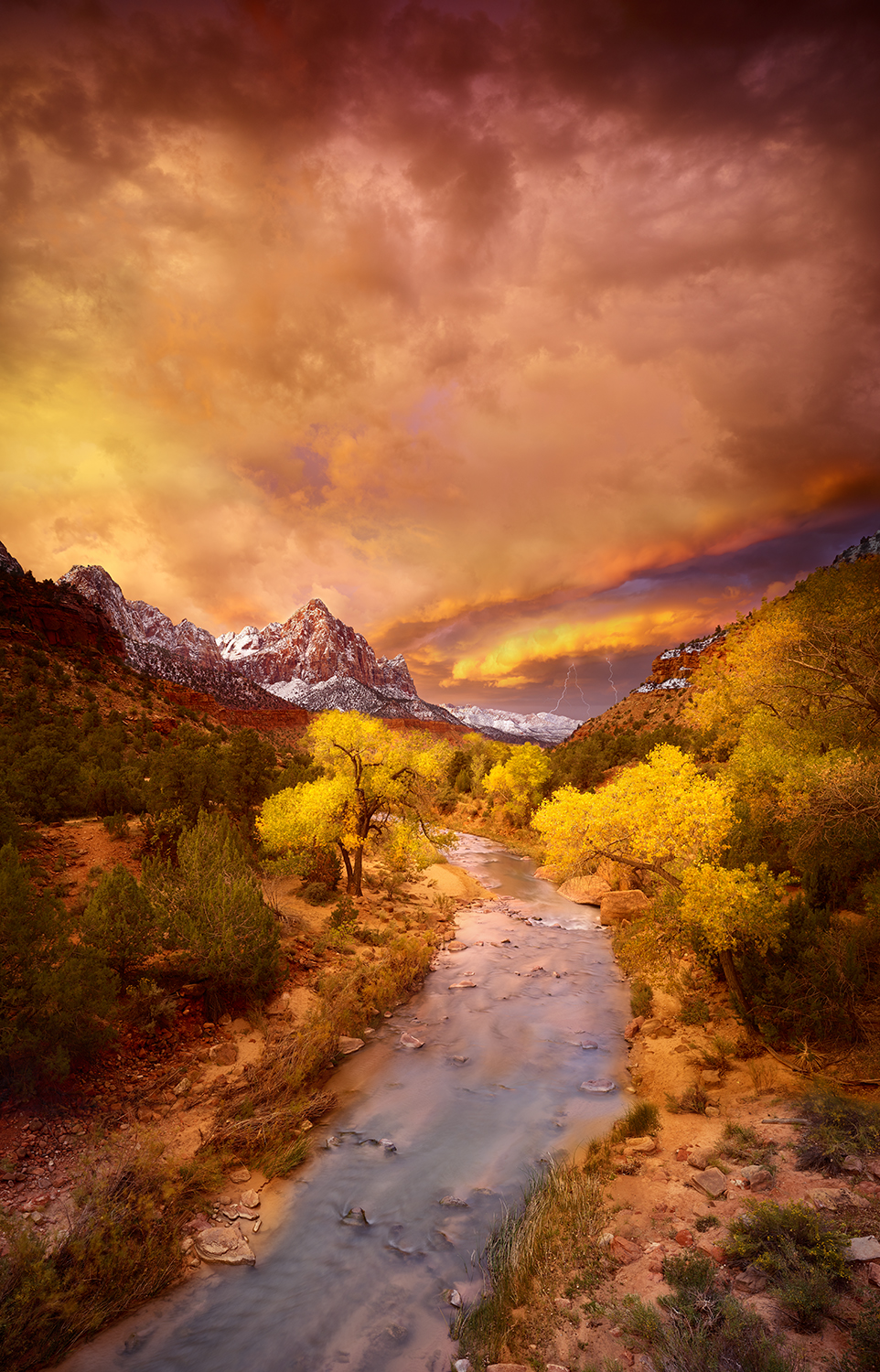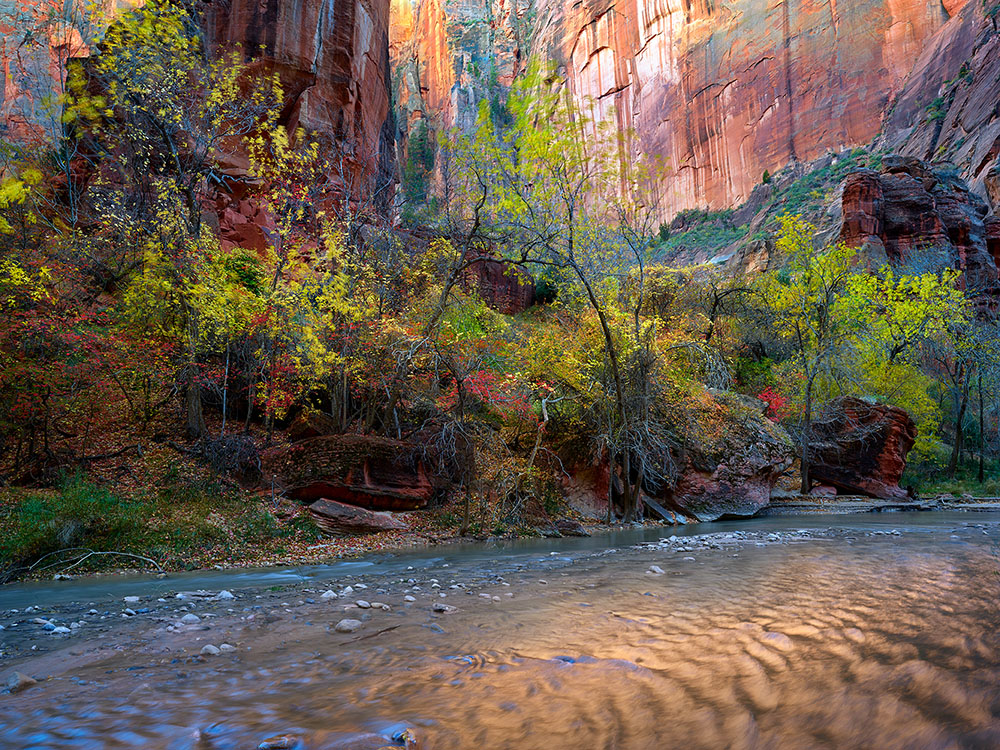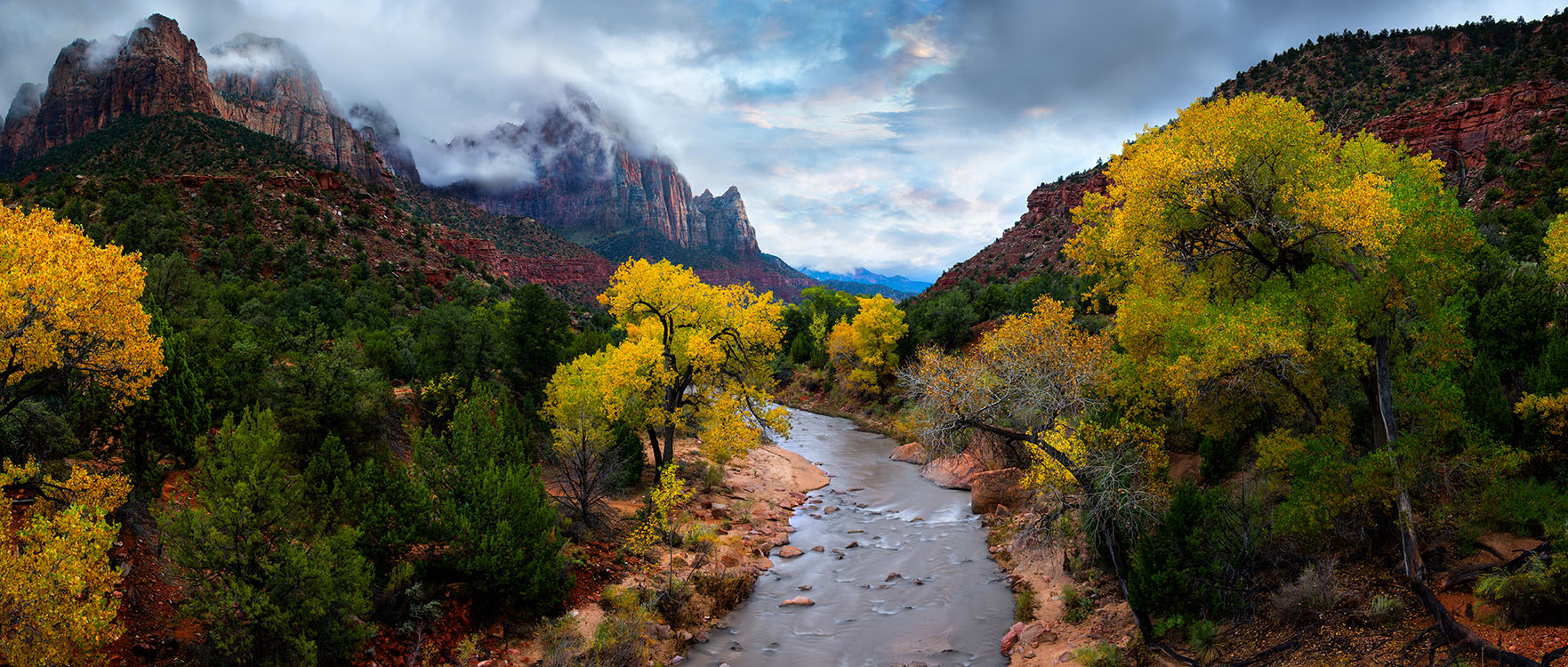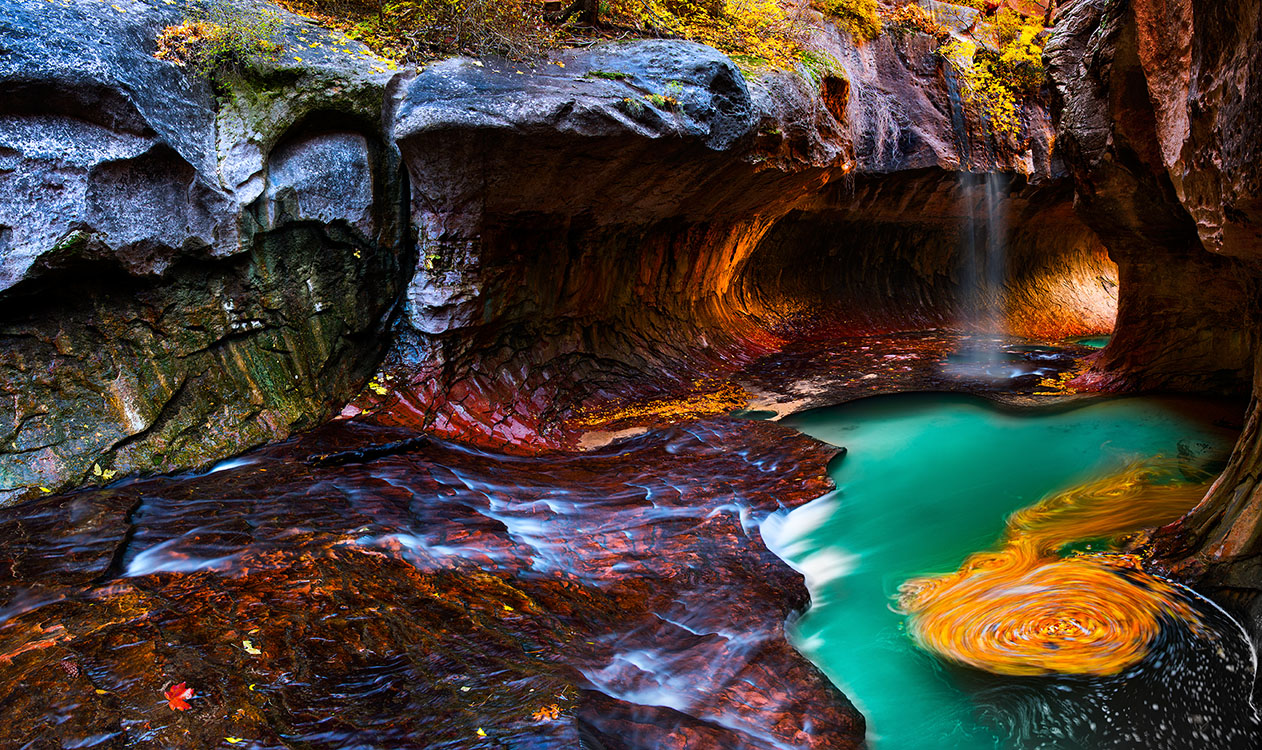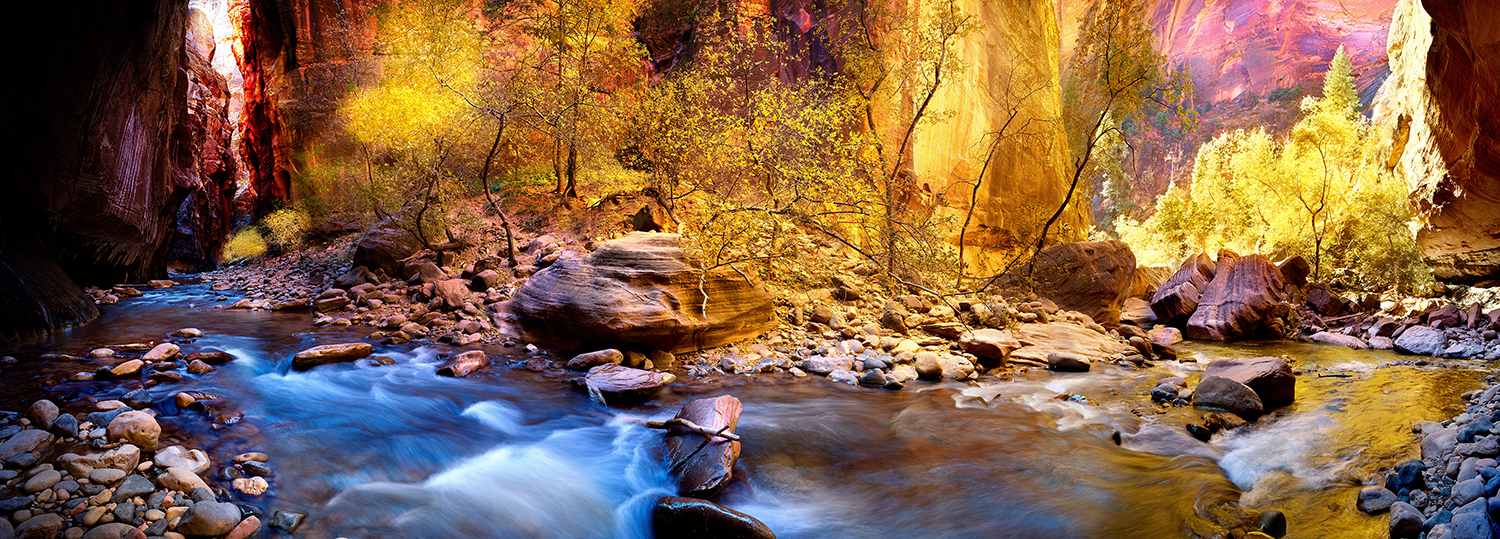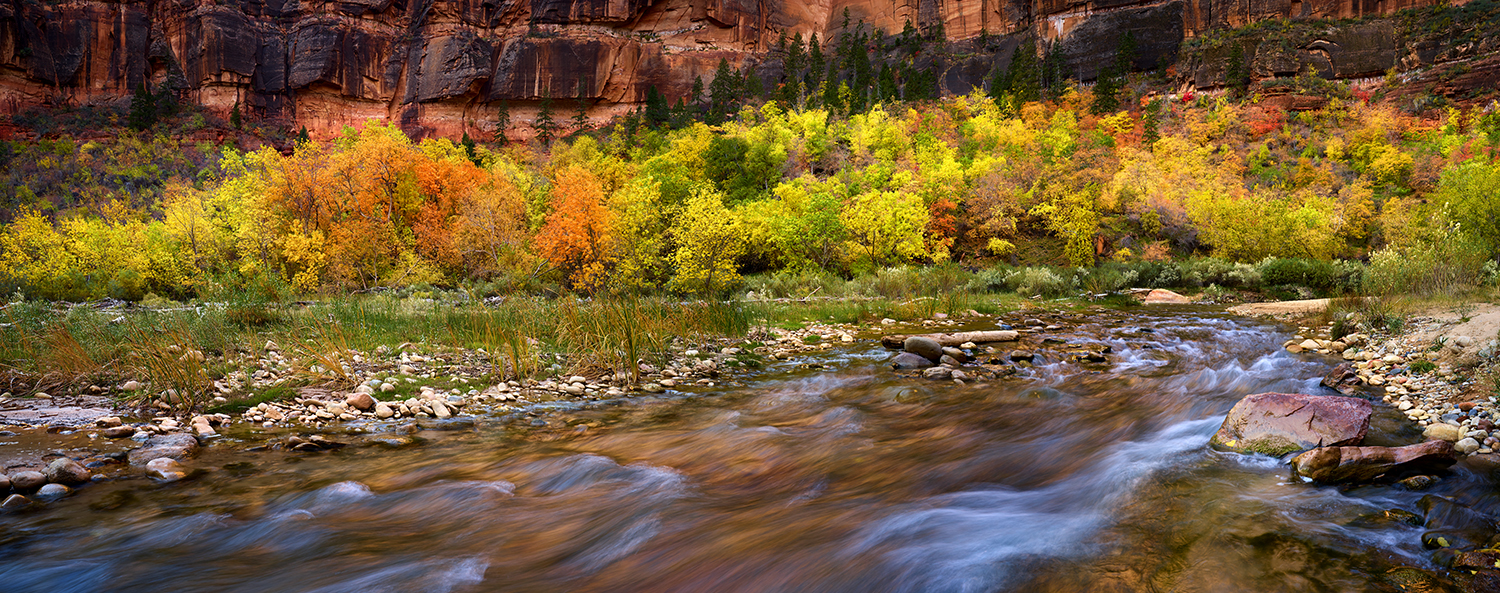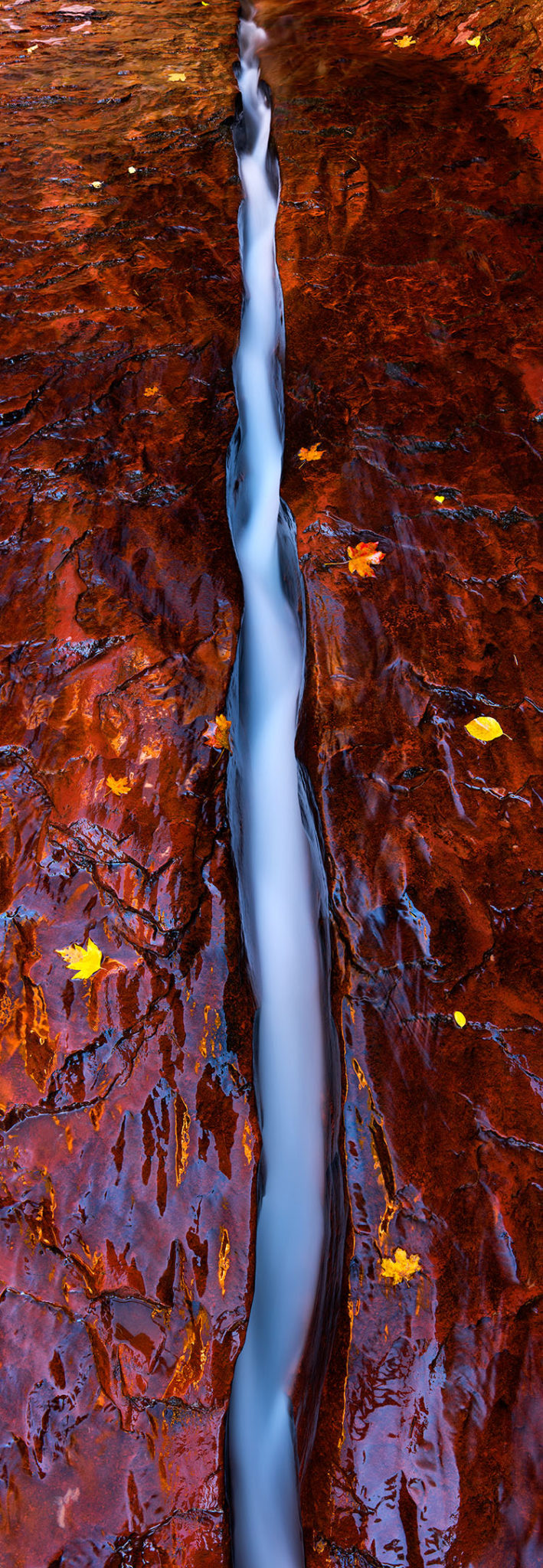Nestled in the southwest corner of Utah, Zion National Park is a cathedral of stone and light—where towering red rock walls kiss the sky and deep canyons echo with the whispers of ancient geologic time. It’s a place I return to a few times a year with my camera and my curiosity, because no matter how many shutter clicks or hikes I’ve logged here, Zion always offers something new—an angle, a glow, a silence—that feels like discovering it for the first time.
In this post, I want to take you deep into what makes Zion so special—not just for photographers, but for hikers, nature lovers, and anyone drawn to wild, sacred landscapes.
A Brief History of Zion National Park
Zion’s story is one of water carving stone over millions of years, and people finding meaning in its grandeur. Long before it became a national park, this region was home to the Ancestral Puebloans and later the Southern Paiute, whose cultural imprints remain etched into the rock and lore of the region. In the late 1800s, Mormon settlers arrived and named the canyon “Zion,” a biblical term meaning a place of peace and refuge.
The area was first protected in 1909 as Mukuntuweap National Monument by President William Howard Taft. In 1919, it was renamed Zion National Park and designated as the 15th national park in the U.S. Since then, it has become one of the crown jewels of the American Southwest—revered not just for its beauty, but for its accessibility, biodiversity, and spiritual impact.
What Makes Zion So Special?
Zion is unlike any other national park. Sure, the Grand Canyon stuns with scale, and Yosemite overwhelms with drama, but Zion feels intimate in comparison—like you’ve stepped inside a colossal, glowing amphitheater where nature performs quietly and profoundly.
Here’s why Zion stands out:
1. Vertical Wilderness
Zion is a vertical park. The canyon walls rise up to 2,000 feet from the valley floor, creating a staggering sense of scale. From the depths of The Narrows, where you wade through the Virgin River between sandstone cliffs, to the lofty perch of Angels Landing, Zion invites you to experience elevation in both body and spirit.
2. The Light
As a photographer, I can’t talk about Zion without talking about the light. At sunrise and sunset, the canyon glows as if lit from within. The red Navajo sandstone reflects warm tones that evolve every minute. I’ve stood in the same spot, camera on tripod, watching the cliffs change from a golden apricot to deep crimson in just 20 minutes. It’s alchemy.
3. Geological Layers and Color
Zion’s beauty is layered—literally. The towering walls showcase 150 million years of geological time, each stratum with a different hue and texture. You’ll find creamy whites, pinks, reds, and deep chocolate browns, often decorated with streaks of desert varnish. Combined with cottonwoods, junipers, and seasonal blooms, the palette is endless.
4. Biodiversity and Microclimates
Within its boundaries, Zion contains everything from high desert mesas to riparian oases. Elevations range from 3,600 to over 8,700 feet, supporting an impressive array of plant and animal life. It’s not uncommon to see desert bighorn sheep scaling the cliffs, or a peregrine falcon slicing through the air above.
–
Zion Through the Seasons
Zion transforms with the seasons, and as a photographer, each shift feels like entering a new park entirely.
Spring (March–May)
Spring breathes life into the canyon. Snowmelt feeds waterfalls, the Virgin River runs high, and cottonwoods begin to bud. Wildflowers splash color across the valley floor. It’s a vibrant time to visit, though trails like The Narrows may be inaccessible due to high water.
Photographer’s Tip: This is a great time for long exposures of waterfalls and capturing lush contrast against red rock.
Summer (June–August)
Summer brings crowds and heat—triple digits aren’t uncommon—but also dramatic monsoon storms that create intense, short-lived light shows. Thunderheads build in the afternoon and explode with lightning, giving the landscape a charged, cinematic feel.
Photographer’s Tip: Shoot early or late in the day to avoid harsh shadows and heat. Watch for reflected light in the slot canyons.
Fall (September–November)
My favorite season. The cottonwoods turn gold, the crowds thin out, and the air carries a crisp clarity that makes every shot feel crisper. Fall light is soft and angled—perfect for canyon photography.
Photographer’s Tip: The last week of October to mid-November is peak for fall color. Scout in advance for river scenes with golden leaves against red walls.
Winter (December–February)
Snow in Zion is rare but magical. When it happens, the park transforms into a silent, painterly dream. Trails like Angels Landing may be icy, but the serenity is unmatched. The desert stillness, combined with low-angle light, can yield some of the most striking compositions.
Photographer’s Tip: Winter is perfect for minimalist compositions—bare trees, snow against red cliffs, animal tracks in sand.
Managing the Crowds
Zion has become one of the most visited national parks in the U.S., with over 4 million visitors a year. During peak months, the main canyon is accessible only via the shuttle system. While this helps reduce congestion, it also means planning ahead.
I’ve learned to navigate the crowds by:
-
Starting early: First light is not only better for photography—it’s better for parking.
-
Exploring off-the-beaten-path: Kolob Canyons and Kolob Terrace Road offer breathtaking solitude.
-
Visiting mid-week in shoulder seasons: Late fall and early spring offer ideal balance.
Even when it’s busy, Zion offers moments of solitude—you just have to seek them out.
–
Why I Keep Coming Back
I’ve photographed Zion in every season, every condition—from rainstorms that turned dry washes into waterfalls to quiet winter mornings when my footprints were the only ones in the snow. But it’s not just about the photos. Zion is a place that invites reverence. You can’t help but slow down here. You listen more. You look more carefully. You breathe more deeply.
As a photographer, that’s priceless.
Zion challenges you to see differently—because the light is always changing, the textures shift with the seasons, and no two days are the same. It keeps you humble. It keeps you learning. And it always reminds me why I picked up a camera in the first place: to capture not just what I see, but how I feel in a place like this.
–
Final Thoughts
If you’ve never been to Zion, go. If you’ve been a dozen times, go again. Whether you’re a photographer, a hiker, or a quiet observer of beauty, Zion offers more than just views—it offers a chance to connect. To the land. To history. To yourself.
I’ll be back there soon, camera in hand, boots on red earth, chasing that perfect slant of light. Maybe I’ll see you there.

